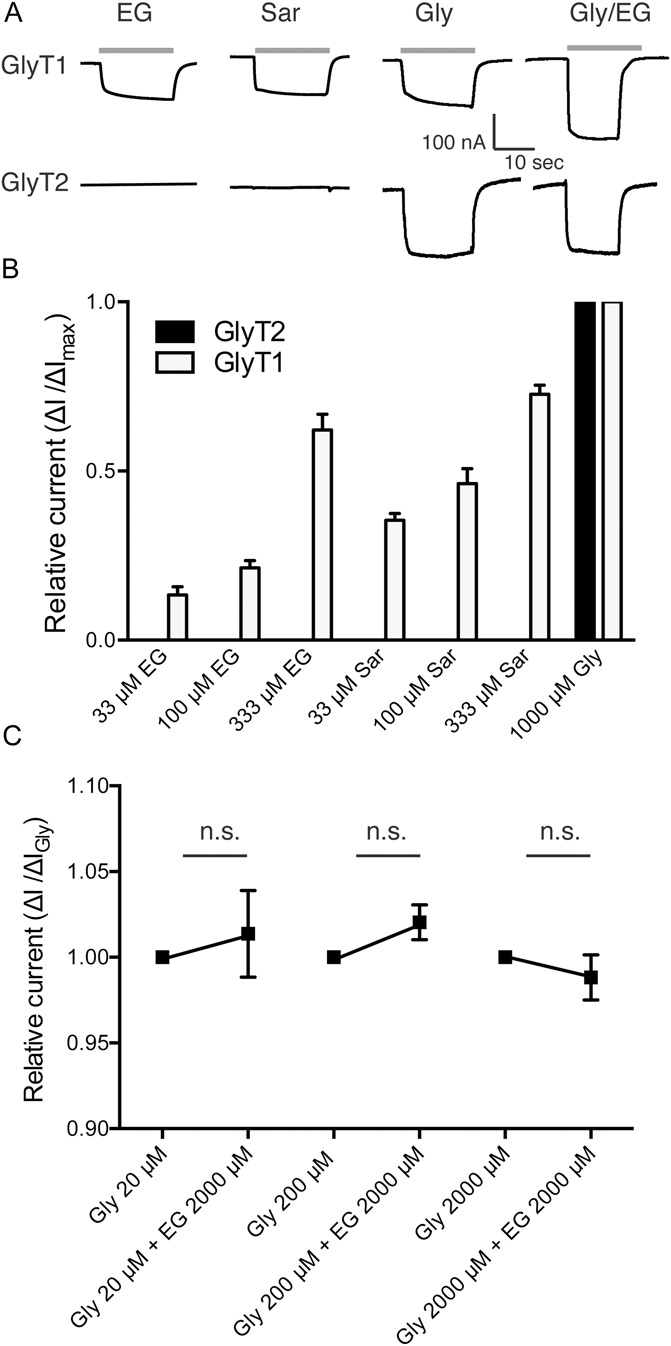Figure 1.

N-ethylglycine (EG) is an artificial substrate for glycine transporter 1 (GlyT1) but has no effect on glycine transporter 2 (GlyT2) function. Xenopus laevis oocytes were injected with complementary RNA encoding for mouse GlyT1 or GlyT2. Substance-induced currents were recorded at a membrane potential held at −50 mV. The respective substances were applied for 20 seconds each followed by a washout of 30 seconds. (A), Representative substance-induced currents for 30 μM glycine (Gly), 1 mM sarcosine (Sar), 1 mM EG, and Gly/EG coapplication were recorded from oocytes expressing GlyT1 or GlyT2, respectively. (B), Average amplitude of the substance-induced currents (EG or sarcosine in the respective concentration) in recordings from GlyT1- or GlyT2-expressing oocytes in relation to the maximal glycine-induced current. Note that EG and sarcosine did not induce currents in GlyT2-expressing oocytes, while glycine led to robust GlyT2-mediated currents. Data are expressed as mean ± SEM (n = 4-6). (C), Comparison of substance-induced currents recorded from GlyT2-expressing oocytes induced by glycine at indicated concentrations or after coapplication of glycine and EG at indicated concentrations. EG did not alter the glycine-induced currents. Data are expressed as mean ± SEM (n = 4-6).
